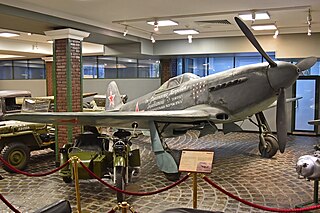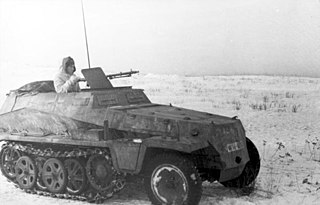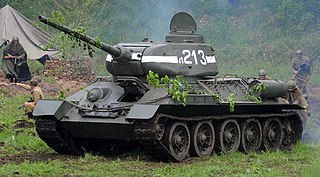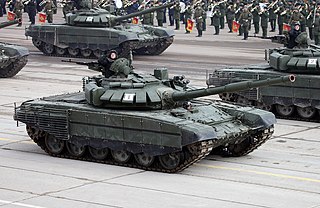Self-guided Sightseeing Tour #2 in Volgograd, Russia
Legend
Tour Facts
1.1 km
23 m
Experience Volgograd in Russia in a whole new way with our free self-guided sightseeing tour. This site not only offers you practical information and insider tips, but also a rich variety of activities and sights you shouldn't miss. Whether you love art and culture, want to explore historical sites or simply want to experience the vibrant atmosphere of a lively city - you'll find everything you need for your personal adventure here.
Individual Sights in VolgogradSight 1: Су-2
The Sukhoi Su-2 is a Soviet reconnaissance and light bomber aircraft used in the early stages of World War II. It was the first airplane designed by Pavel Sukhoi. The basic design received an engine and armament upgrade (Su-4) and was modified for the ground-attack role (ShB).
Sight 2: Легкий бронеавтомобиль БА-64
The BA-64 was a Soviet four-wheeled armoured scout car. Built on the chassis of a GAZ-64 or GAZ-67 jeep, it incorporated a hull loosely modeled after that of the Sd.Kfz. 221. The BA-64 was developed between July and November 1941 to replace the BA-20 then in service with armoured car units of the Red Army. Cheap and exceptionally reliable, it would later become the most common Soviet wheeled armoured fighting vehicle to enter service during World War II, with over 9,000 being manufactured before production ended.
Sight 3: Легкий танк Т-60

The T-60 scout tank was a light tank produced by the Soviet Union from 1941 to 1942. During this period, 6,292 units were built. The tank was designed to replace the obsolete T-38 amphibious scout tank and saw action during World War II.
Sight 4: Легкий танк Т-26
The T-26 tank was a Soviet light tank used during many conflicts of the Interwar period and in World War II. It was a development of the British Vickers 6-Ton tank and was one of the most successful tank designs of the 1930s until its light armour became vulnerable to newer anti-tank guns. It was produced in greater numbers than any other tank of the period, with more than 11,000 units manufactured giving it the title of the most produced tank during the interwar period. During the 1930s, the USSR developed 53 variants of the T-26, including flame-throwing tanks, combat engineer vehicles, remotely controlled tanks, self-propelled guns, artillery tractors, and armoured carriers. Twenty-three of these were series-produced, others were experimental models.
Sight 5: Т-34
The T-34 is a Soviet medium tank from World War II. When introduced, its 76.2 mm (3 in) tank gun was more powerful than many of its contemporaries, and its 60-degree sloped armour provided good protection against anti-tank weapons. The T-34 had a profound effect on the conflict on the Eastern Front, and had a long-lasting impact on tank design. The tank was praised by multiple German generals when encountered during Operation Barbarossa, although its armour and armament were surpassed later in the war. Its main strength was its cost and production time, meaning that German panzer forces would often fight against Soviet tank forces several times their own size. The T-34 was also a critical part of the mechanized divisions that formed the backbone of the deep battle strategy.
Sight 6: Г. К. Жукову
Georgy Konstantinovich Zhukov was Marshal of the Soviet Union from 1943 to 1957. He also served as Chief of the General Staff, Minister of Defence, and was a member of the Presidium of the Communist Party. During World War II, Zhukov oversaw some of the Red Army's most decisive victories, after which he was appointed the military governor of the Soviet occupation zone in Germany.
Sight 7: Памятник жертвам политических репрессий

The Monument to the Victims of Political Repression is a monument in Volgograd, located at the intersection of Chuikova and Naumov streets.
Wikipedia: Памятник жертвам политических репрессий (Волгоград) (RU)
Sight 8: Т-72
The T-72 is a family of Soviet main battle tanks that entered production in 1973. The T-72 was a development based on the T-64 using thought and design of the previous Object 167M. About 25,000 T-72 tanks have been built, and refurbishment has enabled many to remain in service for decades. It has been widely exported and has seen service in 40 countries and in numerous conflicts. The Russian T-90 introduced in 1992 and the Chinese Type 99 are further developments of the T-72. Production and development of various modernized T-72 models continues today. Currently holds the record for the most MBT's lost in combat.
Sight 9: ИС-3
The IS-3 is a Soviet heavy tank developed in late 1944. Its semi-hemispherical cast turret became the hallmark of post-war Soviet tanks. Its pike nose design would also be mirrored by other tanks of the IS tank family such as the IS-7 and T-10. Produced too late to see combat in World War II, the IS-3 participated in the Berlin Victory Parade of 1945, the Soviet invasion of Hungary, the Six-Day War, Yom Kippur War, and one was used during the early stages of the Russo-Ukrainian War.
Sight 10: ИС-2
The IS-2 is a Soviet heavy tank, the second of the IS tank series named after the Soviet leader Joseph Stalin. It was developed and saw combat during World War II and saw service in other Soviet allied countries after the war.
Sight 11: ИСУ-152

The ISU-152 is a Soviet self-propelled gun developed and used during World War II. It was unofficially nicknamed Zveroboy in response to several large German tanks and guns coming into service, including Tigers and Panthers. Since the ISU-152's gun was mounted in a casemate, aiming it was awkward, and had to be done by repositioning the entire vehicle using the tracks. Therefore, it was used as mobile artillery to support more mobile infantry and armor attacks. It continued service into the 1970s and was used in several campaigns and countries.
Sight 12: Воинский эшелон
“Military Echelon” is a military train led by a steam locomotive Er, installed as a monument in Volgograd by the Panorama Museum “Battle of Stalingrad”. The memorial complex was built in June 2009 and was dedicated to railway workers and military builders who ensured the uninterrupted supply of the Stalingrad Front by military cargo during the Battle of Stalingrad.
Sight 13: Медаль Золотая звезда
The title Hero of the Soviet Union was the highest distinction in the Soviet Union, awarded together with the Order of Lenin personally or collectively for heroic feats in service to the Soviet state and society. The title was awarded both to civilian and military persons.
Sight 14: Як-3

The Yakovlev Yak-3 is a single-engine, single-seat World War II Soviet fighter. Robust and easy to maintain, it was much liked by both pilots and ground crew. One of the smallest and lightest combat fighters fielded by any combatant during the war, its high power-to-weight ratio gave it excellent performance and it proved to be a formidable dogfighter.
Sight 15: Ствол 203-мм гаубицы

203 mm howitzer M1931 (B-4) was a 203 mm (8 inch) Soviet high-power heavy howitzer. During the Second World War, it was under the command of the Stavka's strategic reserve. It was nicknamed "Stalin's sledgehammer" by German soldiers. These guns were used with success against Finnish pillboxes at the Mannerheim Line, heavy German fortifications and in urban combat for destroying protected buildings and bunkers. These guns were used until the end of the war in the Battle of Berlin, during which the Red Army used them to smash German fortifications at point blank range with their heavy 203mm shells. In the spring of 1944, a KV-1S tank chassis was used to create a self-propelled variant, the S-51. The heavy recoil from the muzzle blast threw the crew off their seats and damaged the transmission, and so it was cancelled.
Sight 16: Panoramic museum The Battle of Stalingrad
The Battle of Stalingrad Museum-Reserve is a museum complex in Volgograd.
Sight 17: 152-мм гаубица-пушка образца 1937 года (МЛ-20)
The 152 mm howitzer-gun M1937 (ML-20), is a Soviet heavy gun-howitzer. The gun was developed by the design bureau of the plant no 172, headed by F. F. Petrov, as a deep upgrade of the 152-mm gun M1910/34, in turn based on the 152-mm siege gun M1910, a pre-World War I design by Schneider. It was in production from 1937 to 1946. The ML-20 saw action in World War II, mainly as a corps / army level artillery piece of the Soviet Army. Captured guns were employed by Wehrmacht and the Finnish Army. Post World War II, the ML-20 saw combat in numerous conflicts during the mid to late twentieth century.
Sight 18: 152-мм гаубица образца 1943 года (Д-1)
The D-1 howitzer M1943 is a Soviet World War II-era 152.4 mm howitzer. The gun was developed by the design bureau headed by F. F. Petrov in 1942 and 1943, based on the carriage of the 122 mm howitzer M1938 (M-30) and using the barrel of the 152 mm howitzer M1938 (M-10). The powerful and mobile D-1, with its wide range of ammunition, significantly increased the firepower and breakthrough abilities of Red Army tank and motor rifle formations. Several hundred D-1s were manufactured before the end of World War II.
Sight 19: 57-мм противотанковая пушка образца 1941 года (ЗИС-2)
The ZiS-2 is a Soviet 57 mm anti-tank gun used during World War II. The ZiS-4 is a version of the gun that was meant to be installed in tanks. ZiS stands for Zavod imeni Stalina, the official title of Artillery Factory No. 92, which produced the gun first.
Sight 20: 76-мм дивизионная пушка образца 1942 года (ЗИС-3)
The 76-mm divisional gun M1942 (ZiS-3) was a Soviet 76.2 mm divisional field gun used during World War II. ZiS was a factory designation and stood for Zavod imeni Stalina, the honorific title of Artillery Factory No. 92, which first constructed this gun.
Sight 21: 122-мм гаубица образца 1938 года (М-30)
The 122 mm howitzer M1938 (M-30) is a Soviet 121.92 mm (4.8 inch) howitzer. The weapon was developed by the design bureau of Motovilikha Plants, headed by F. F. Petrov, in the late 1930s, and was in production from 1939 to 1955. The M-30 saw action in World War II, mainly as a divisional artillery piece of the Red Army (RKKA). Captured guns were also employed later in the conflict by the German Wehrmacht and the Finnish Army. Post World War II the M-30 saw combat in numerous conflicts of the mid- to late twentieth century in service of other countries' armies, notably in the Middle East.
Sight 22: 85-мм дивизионная пушка Д-44
The 85-mm divisional gun D-44 was a Soviet divisional 85-mm calibre field artillery gun used in the last action of World War II. It was designed as the replacement for the 76 mm divisional gun M1942 (ZiS-3). The gun was no longer in front-line service with the Russian Ground Forces, until being pressed back into service in the Russo-Ukrainian War in 2023. Wartime service included use by communist forces during the Vietnam War and by Arab forces during their conflicts with Israel.
Sight 23: 150-мм тяжелая полевая пушка 15 cm sFH 18
The 15 cm schwere Feldhaubitze 18 or sFH 18, nicknamed Immergrün ("Evergreen"), was the basic German division-level heavy howitzer of 149mm during the Second World War, serving alongside the smaller but more numerous 10.5 cm leFH 18. Its mobility and firing range and the effectiveness of its 44 kilogram shell made it the most important weapon of all German infantry divisions. A total of 6,756 examples were produced.
Sight 24: 20-мм зенитная пушка 2 cm FlaK 30
The 2.0 cm FlaK 30/38 is a German 20 mm automatic anti-aircraft gun developed by Rheinmetall/Mauser, respectively.
Sight 25: 50-мм противотанковая пушка 5 cm FlaK 41
The 5 cm Flak 41 (Flugabwehrkanone 41) was a German 50 mm (2.0 in) anti-aircraft gun produced for defending the intermediate zone above the range of light guns, but below the ceiling of the heavy pieces. The gun proved inadequate and was produced only in small numbers.
Sight 26: Легкий полугусеничный бронетранспортёр Sd. Kfz. 250/1

The Sd.Kfz. 250 was a light armoured half-track, very similar in appearance to the larger Hanomag-designed Sd.Kfz. 251, and built by the DEMAG firm, for use by Nazi Germany in World War II. Most variants were open-topped and had a single access door in the rear.
Share
How likely are you to recommend us?
Disclaimer Please be aware of your surroundings and do not enter private property. We are not liable for any damages that occur during the tours.
GPX-Download For navigation apps and GPS devices you can download the tour as a GPX file.











.jpg)







